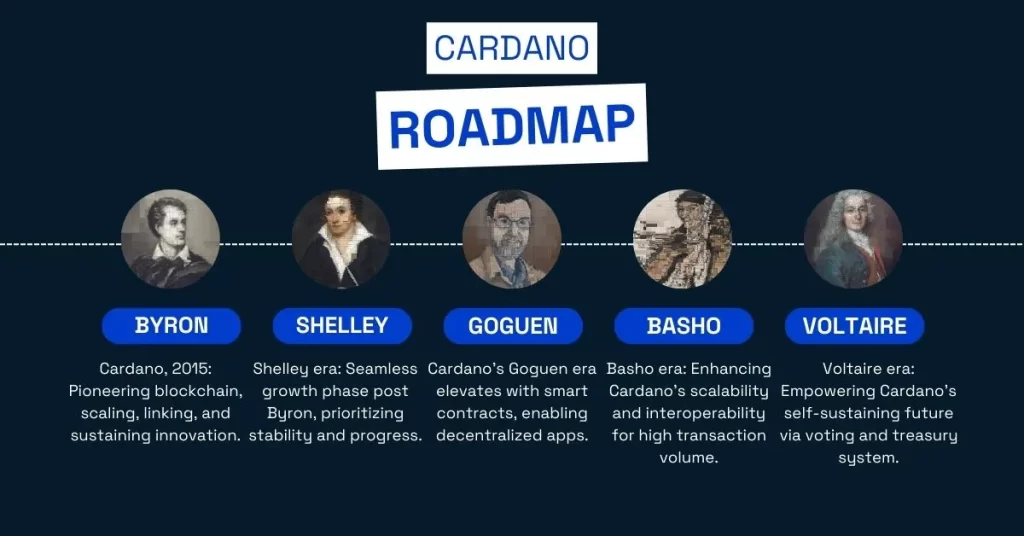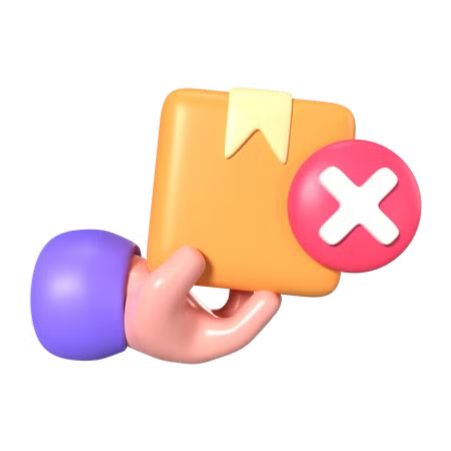Cardano for Beginners: Learn the Basics Now!

Cardano is a third-generation blockchain platform that aims to be more scalable, secure, and sustainable than previous generations. It uses a unique consensus mechanism and also has a layered architecture, which makes it easier to upgrade and add new features.
Cardano has a number of potential use cases, including decentralized finance (DeFi), supply chain management, decentralized governance, identity verification, and gaming applications. It is still under development, but it has already made significant progress and has a bright future.
And that’s exactly why it’s time for you to hop aboard the Cardano train, learn all about it, and get started. In this article, we’ll equip you with all the information you’ll need. Read on.
Key Takeaways
Cardano is a third-generation platform working with two layers of operation.ADA is Cardano’s native token used for various purposes.Cardano is regarded as the most environment-friendly in comparison to others.
1. What is Cardano?
Cardano is like a digital playground where you can create and play games using special tokens. These tokens work as in-game coins that you can trade and use for gaming or even making your games. What’s special about Cardano is its super secure design, which keeps your tokens safe. It’s all packed into one place, with ADA being the main token here.
Imagine one wants to buy a house using smart contract on Cardano. The contract ensures a secure and transparent transaction. The seller and the person agree on terms, like price and conditions, and encode them into the Cardano blockchain. When the conditions are fulfilled, the smart contract automatically executes, transferring ownership to you. This eliminates the need for intermediate like banks, making the process faster, cheaper, and more reliable.
1.1. A Closer Look
Cardano is a blockchain platform that aims to make the world of cryptocurrencies safer and more efficient.
- Security: Cardano goes to great lengths to protect your transactions from hackers.
- Scalability: It can handle lots of transactions without getting slow or expensive.
- Sustainability: Cardano is also eco-friendly and cost-effective.
- Layered Structure: It has built-in layers, making it easy to upgrade and add new features.
- Smart Contracts: Cardano can use smart contracts, which are like self-executing agreements written in code.
- ADA: ADA is the main currency here and is used for transactions.
- Supply Limit: There will only ever be 45 billion ADA tokens, which are gradually released over time. You can exchange ADA for regular money like the US dollar and keep it in crypto wallets.
Cardano’s goal is to create a better blockchain platform that helps the entire crypto world grow.
1.2. A Glimpse into Cardano’s History and Evolution
Cardano was created by Charles Hoskinson and a company called Input Output Hong Kong (IOHK). It all started in 2015, and in 2017, Cardano’s ADA token was born. The main focus was on making it more secure, scalable, and sustainable. They use something called the proof-of-stake algorithm to process transactions and create new blocks. The Cardano journey is divided into five stages, which we’ll explore.
1.3. All about ADA
ADA is Cardano’s main cryptocurrency. It’s like the fuel that powers everything within the Cardano world.
- Payments: You can use ADA to pay for things and services in the Cardano world.
- Staking: If you own ADA, you can help make the network work better by staking it.
- Governance: ADA holders also have a say in how Cardano works.
With Cardano’s Alonzo upgrade, ADA becomes even more important, as it’s used for payments and as collateral in smart contracts. It’s a vital part of the Cardano world!
1.4. The Five Phases of Cardano’s Roadmap
Cardano’s journey can be divided into five phases, each one making Cardano better over time.

- Byron (Foundation: 2015-17): These first two years were all about starting Cardano and introducing ADA. It was a time to build a community and get people involved.
- Shelley (Decentralization, July 2020): Shelley was about growing and improving the Cardano world. They wanted to make the network safer by getting more people involved and introducing rewards and staking.
- Goguen (Smart Contracts, Dec 2020 – September 2022): This phase brought smart contracts and decentralized apps to Cardano.
- Basho (Scaling): Basho was all about making the Cardano network faster and more efficient.
- Voltaire (Governance): The final phase is about making Cardano run itself, with the help of everyone involved. When this is done, Cardano will be truly decentralized.
2. How Cardano Works
Cardano operates using a two-layer structure, consisting of the Computation Layer (CCL) and the Settlement Layer (CSL), making it a third-generation platform. These layers collaborate to facilitate all transactions on the platform, and Cardano relies on a unique consensus mechanism called Ouroboros.
The CSL is responsible for the transfer of value, serving as the foundation for ADA. It operates on a proof-of-stake system where validators, known as stakeholders, create and validate blocks based on the amount of ADA they hold and are willing to stake as collateral.
The CCL empowers smart contracts and decentralized applications (DApps) to function within the platform. It’s engineered to be secure, scalable, and sustainable, with a heavy focus on research and academic validation.
Cardano’s seamless operation combines the capabilities of these two layers to create a platform that tackles issues like scalability, interoperability, and sustainability.
3. Key Features
Cardano stands out due to several key features:
- Scientific Approach: The platform is grounded in robust research, ensuring security and regular updates.
- Layered Architecture: Its layered structure enhances flexibility, scalability, and security. Cardano can process over 250 transactions per second (TPS), a significant improvement over Bitcoin’s 4.6 TPS.
- Proof of Stake: The use of the proof-of-stake mechanism makes Cardano more energy-efficient compared to proof-of-work systems.
- ADA Staking: Users can participate in the network’s consensus mechanism by staking ADA tokens.
- Interoperability: Cardano aims to facilitate cross-chain interactions, promoting compatibility with other systems.
- Scalability: It addresses scalability through layered architecture and off-chain solutions.
- Eco-Friendly: In a 2021 interview with Forbes, Charles Hoskinson claimed that Cardano is 1.6 million times more energy-efficient than Bitcoin.
4. Pros and Cons
Cardano has made a significant impact in the crypto market, introducing advanced features.
Pros:
- Scientific Approach: Cardano’s scientific foundation has led to the development of a robust and rigorous blockchain protocol.
- Layered Architecture: Its architecture provides scalability, flexibility, and easy system upgrades.
- Treasury System: Cardano’s treasury system allows for self-funding, ensuring long-term ecosystem growth.
Cons:
- Development Time: Some critics argue that Cardano’s development and research have taken longer than expected.
- Competition: The blockchain space is highly competitive, with strong contenders like Bitcoin and Ethereum.
- Adoption: Cardano needs broader adoption to realize its full potential. It has grown only 90% compared to other projects like Solana and Near, which have experienced over 4x growth despite having smaller market caps than Cardano.
5. Cardano’s Use Cases
Cardano has the potential to become a leading cryptocurrency platform globally, with various use cases, including:
- Decentralized Finance (DeFi): Thanks to its smart contract and PoS consensus mechanism, Cardano is well-suited for DeFi applications.
- Supply Chain Management: Cardano’s blockchain technology can securely track and verify the movement of goods through the supply chain.
- Decentralized Governance: Its decentralized governance system can enable safe and transparent voting and decision-making.
- Identity Verification: Cardano can verify identity using cryptographic proofs and secure smart contracts.
- Gaming Applications: It can be used to create decentralized gaming applications that allow secure and transparent in-game transactions.
In recent developments, Cardano has been supporting a broader range of applications and use cases, including DeFi and NFT initiatives within its ecosystem. Notable projects include the decentralized exchange Sundaeswap (SUNDAE) and the trustless lending platform Meld (MELD).
6. Tokenomics
Cardano is a deflationary cryptocurrency which means there is a fixed maximum supply. The supply is capped at 45 billion ADA.
| ADA | $0.26 on 22 August 2023 |
| Market cap | $9.1 billion |
| Typical hold time | 141 days |
| All time high | $3.10 |
| Popularity | 6 |
| Volume 24-hour | $180.8 million |
| Circulating supply | 31.1 billion ADA |
7. Future of Cardano
Cardano, the research-driven blockchain platform with a layered architecture, has made significant progress since its inception. With its focus on flexibility, scalability, and interoperability, Cardano is well-positioned to play a leading role in the future of cryptocurrency.
However, the slow-research process needs to be upgraded to beat the booming competition in the crypto world. If Cardano can overcome this challenge, it has the potential to become a major player in the industry.
9. FAQs
Cardano was founded by Charles Hoskinson , one of the co-founders of Ethereum. It is developed by Input Output Hong Kong (IOHK) in collaboration with other organizations.
It emphasizes on research driven approach and utilises peer-reveiwed academic papers to upgrade itself constantly. This feature makes it different from others!
ADA is the native token of the Cardano platform. It can be used for transactions, staking and as a medium of exchange with the ecosystem smoothly.
Well Done! You have now completed the Lesson.
Complete the Quiz and Get Certified! All The Best!
Disclaimer and Risk Warning
The information provided in this content by Coinpedia Academy is for general knowledge and educational purpose only. It is not financial, professional or legal advice, and does not endorse any specific product or service. The organization is not responsible for any losses you may experience. And, Creators own the copyright for images and videos used. If you find any of the contents published inappropriate, please feel free to inform us.


 Previous Lesson
Previous Lesson












